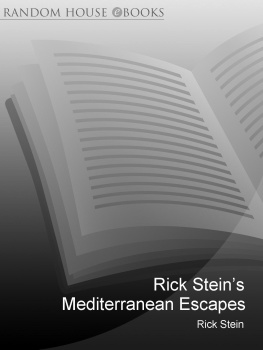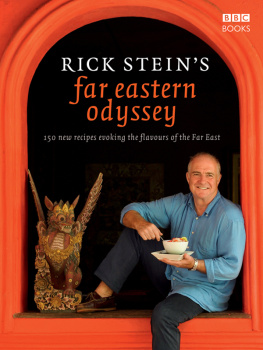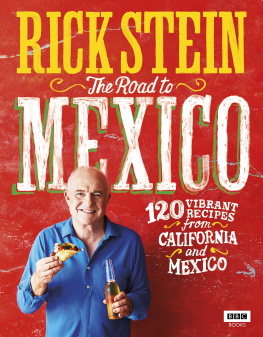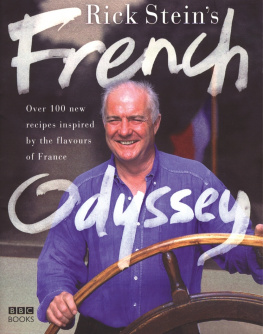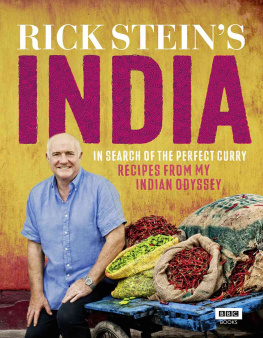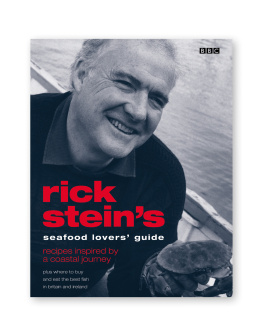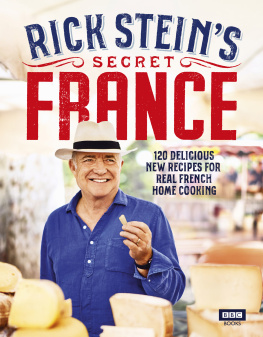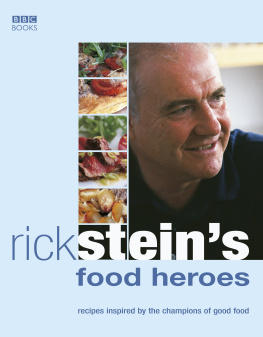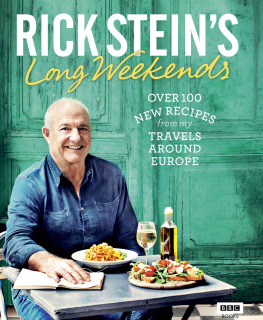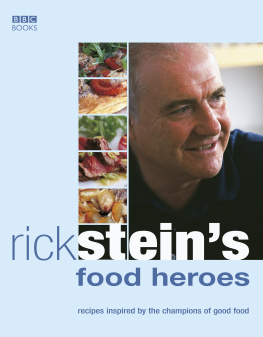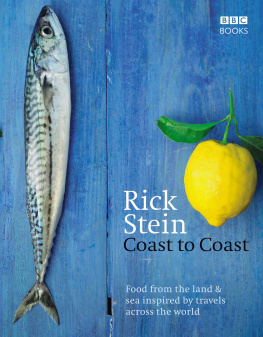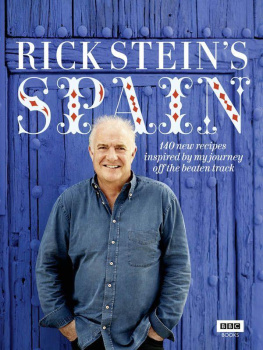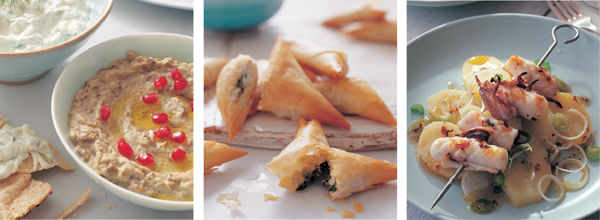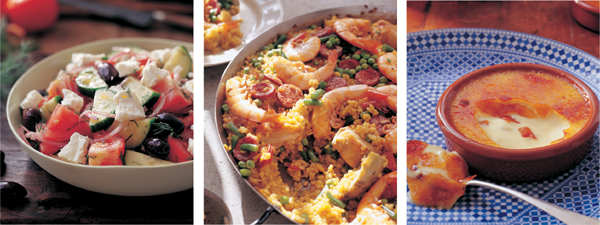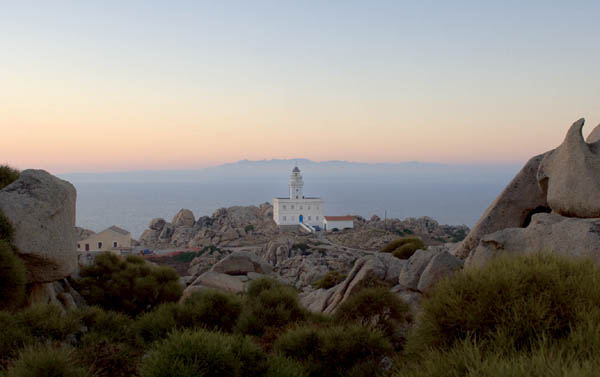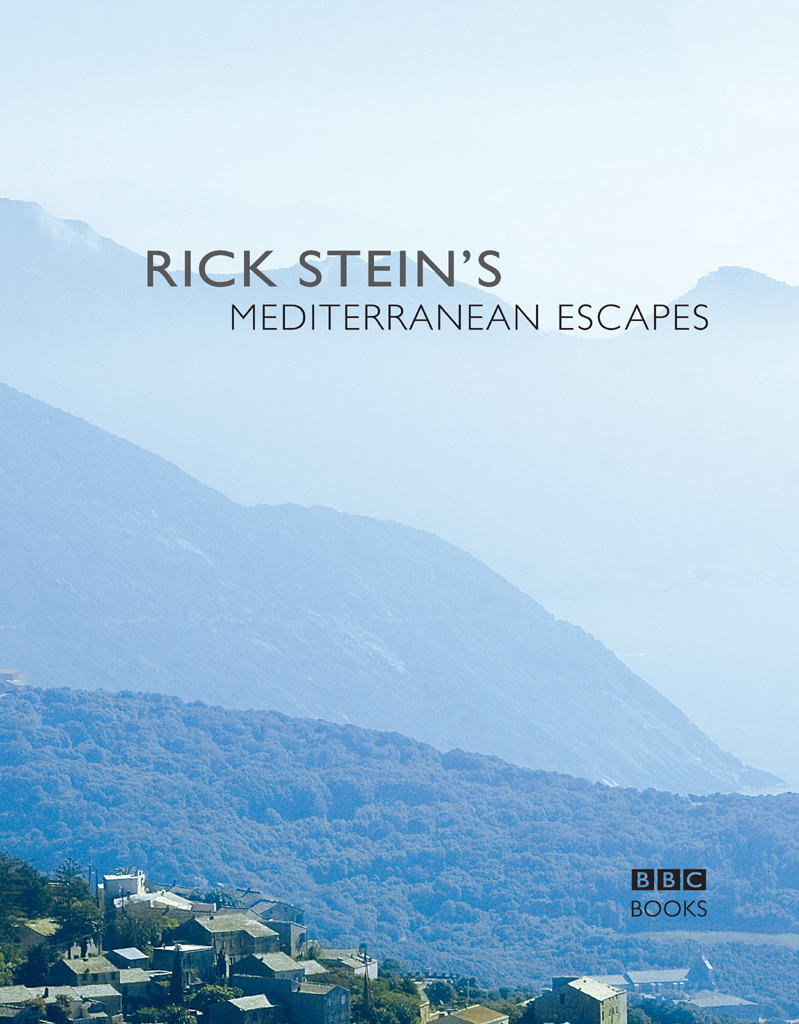CONTENTS
List of Recipes
To Sarah, Zach and Olivia with love
ESCAPE ROUTES
A COUPLE OF years ago, I made a TV series about a barge journey down the canals of France from Bordeaux to Marseille. In the last episode, we finally made it to the Mediterranean, not quite at Marseille but at the mouth of the Rhne at Port St-Louis. We took the old river barge, the Anjodi, right out to sea, and my overriding thought, because I love filming so much, and because the food in the Languedoc and Provence was so sunny and warm, and because I was filled with such a sense of well-being, was: lets keep going! We had been on the boat for about eight weeks and had to get back and get on with the rest of our lives, but I think all of us were charmed by the thought that before long wed start again, where we left off.
So it was that I found myself on the SNCM Napoleon Bonaparte on my way from Marseille to Bastia in Corsica for the first part of a journey to discover the Mediterranean. It had to be by ferry because I was driving a Land Rover, but its a great way to travel. You leave Marseille in the early evening, and by the time the old houses on the quay in Bastia come into view, just as dawn is breaking, youre thinking about Napoleon, the maquis, chestnuts, the thick red wine, ewes milk cheese, figatellu and smoky mountain ham. I had been reading Paul Therouxs The Pillars of Hercules on the way over, or rather trying to, but Prudence, David the directors dog, had been reading it back in Devon, so the cover and quite a lot of the pages had been converted to papier-mch by the dribble and giant teeth of a bull terrier. But before turning in, with the sea swishing below my porthole, I did read about the haunted quality of the island and its vigorous language, the sweet aroma of its maquis, the fatuity of its cult of Napoleon. It made the start of a new journey even more exciting.
Next morning I only just made it to the bow for a camera chat celebrating the ferrys arrival in Bastia. I was rushing around the cabin panicking, mobile ringing, with David saying, Where are you, be quick, or well be there. I slammed the door and ran down the narrow corridor with cabins of sleeping passengers on either side, dragging my case, then saw that I had forgotten my phone. Surely not, its my lifeline. Back in the cabin I found it on the porthole sill. How could I do that? I was certain Id checked everything. Ill never be a proper traveller. I scrambled on to the deck and was immediately captivated by the oil-painting view in front, the old houses on the quay in the golden light of early morning. I only found out later that David had persuaded the captain to slow the boat down to give me time to get up there before we docked.
The first days filming in a new country tends to make me nervous. We were on our way to a Corsican chefs cookery school to film him roasting kid with fresh cocos roses beans. Would he be difficult and arrogant and French, I worried. I wasnt much calmed by the sight of the place: a very old stone house with a tower. Style, serious cookery, a sense of history, this was going to be a hard morning of struggling with the language and smothering a rising irritation at the French, who know best when it comes to cooking. But I soon realized that this was Corsica, not France, and Vincent Tabarani was remarkably modest and friendly. It was a quick lesson in rugged Corsican upland food, its good meat, smoked mountain ham, chestnuts, wild mushrooms, pungent cheeses all raw materials of the best quality.
His students were all local. We sat outside looking through Corsican pines down to the calm blue Mediterranean, eating roasted kid with figs, tomatoes and those lovely cocos roses, which we know as borlotti beans, and drinking more red Patrimonio, and I had an intense feeling of happiness at being on another expedition.
I wouldnt like to have you believe that every expedition was perfection. We drove to a mountain village called Sorio to film a feast in a converted church. I assumed I was going to meet some hardy Corsicans who had lived in this high, sunny hamlet for ever. However, the majority of the population appeared to be retired civil servants and schoolteachers from Lyon and Marseille. The feast started with pulenda. Its a chestnut flour accompaniment to meat. I thought it was awful: sickly sweet, sticky, soft and entirely unsatisfying to the palate. I had had romantic notions that I was in the process of finding the new polenta. They make much of the ceremony of heating and stirring the chestnut flour with water until it thickens, then pouring it out onto a table, where it sets into a floppy cake, which they then cut into slices. Everyone gets some to eat with their grilled figatellu, the smoked liver and pork sausage they were cooking over wood embers in the fireplace of the village hall. But when they started sending round the figatellu, hot with the scent of wood smoke, sandwiched into some really excellent freshly baked bread, with slices of ewes milk cheese, I finally began to smile. The hot fat from the sausages soaked into the bread in a thoroughly satisfying way, and then the singing started. They were folk songs by a local ensemble, the sound plaintive and haunting, and some of their faces strangely hard to categorize, particularly one man in his early fifties, in a tight suit with short black hair plastered neatly to his head with brilliantine, who looked like Picasso.
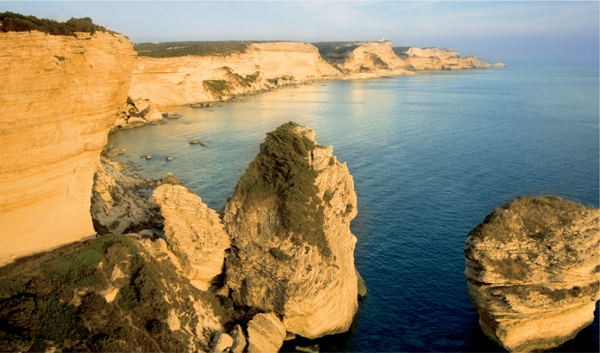
South coast of Corsica from Bonifacio
The Corsicans look rugged; they fit the terrain. We filmed a shepherd called Jean Franois milking his sheep on a chilly morning in his shack up in the hills near the almost medieval village of Lama high above the Ostriconi valley. Later we went back to his tiny fromagerie in the village and watched his wife making their ewes milk cheese. These mountain village cheeses are beautifully sharp and delicate. He explained that their fragrance came from the sheeps diet of maquis herbs such as bush myrtle, many kinds of mint including nepeta (catmint), rosemary, thyme and oregano.
One thing I found surprising: you dont find much fish on the island. To enjoy the food of Corsica, you need to love wild boar, smoked sausage, lamb, goats cheese and ham, and fantastic distant views of mountain tops, pines and rocks with the glinting blue sea in the background.
I was thinking about this as I was leaving Bonifacio on a short and extremely turbulent ferry journey to Santa Teresa Gallura in Sardinia. For all its beauty, Corsica has a slightly sombre feel. Not so Sardinia. It was early May and glorious it felt like we were the first tourists ever to go there. Ridiculous, of course, but thats one of the pleasures of going on food travels: you tend to head for places that are out of the tourist way. Im thinking in particular of two places, Cabras on the west coast and Oliena in the centre. We went to Cabras to see an old method of fishing for grey mullet. Reed and cane traps are laid right across the river and the fish are guided into a chamber where they are caught in big nets. We must have seen half a ton of fish scooped out into boxes. Its sold locally and the roe is salted and dried and made into bottarga. What struck me, apart from the visual appeal of this estuary with the incredibly intricate and attractive walls of cane and reeds, was the demeanour of the fishermen. The food writer Marcella Hazan writes about the Italians inexhaustible facility for making art out of life, and here it was, in action. These guys were macho. They smoked nonchalantly while they worked, shouting and strutting about, fit and healthy and full of beans. Later at lunch we ate at a busy restaurant in Cabras called Il Caminetto, where they served the mullet poached in water and then wrapped in sea purslane. Its left to cool and then served cold, by which time it has taken on some of the flavour of the purslane. I crave it even now.

